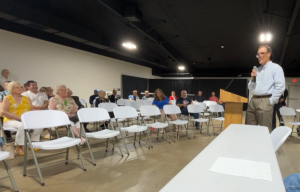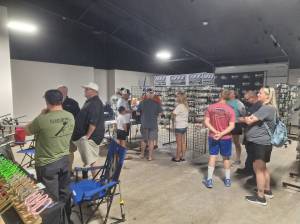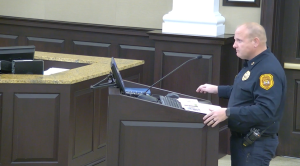LETTER TO THE EDITOR: There are ways to help
Published 4:57 pm Friday, January 17, 2020
|
Getting your Trinity Audio player ready...
|
In response to Our View on Dec. 14-15, 2019 “Let us know how to help”:
My name is Dr. Lew Davis (MHA, PhD) and I am executive director of Bridge To Recovery.
We agree that Stanly County recognizes their drug/alcohol problems, but doesn’t know how to help. It is not about apathy, indifference or even futility.
Trending
It’s about access to care; most people that want help find closed doors. Public policy begins at the grassroots level and “treatment on demand” should be a moral imperative. The public can help by getting involved.
Bridge to Recovery was founded by a group of Stanly County residents in 2009 — everyday people who recognized a problem and wanted to help.
BTR is sustained by volunteers from the community — civic groups and area churches, as well as local corporations, charities and elected officials.
Though BTR is based in Stanly County, we serve all N.C. counties. Hundreds of Stanly County residents have been receiving direct care from BTR since we opened, and our helpline serves innumerable others.
BTR operates a Men’s Sober Shelter in Oakboro (six beds) and a Women’s Sober Shelter in Stanfield (also six beds). Our Monroe facility is a 22-bed clinical program which has 10 designated beds for Stanly County residents.
BTR is the only Stanly County program providing treatment beds at a moment’s notice, yet we were not supported by the Health Department’s opioid grant.
Trending
We were not even invited to the table. BTR has plans to increase services to Stanly County, but we need to be included in funding decisions at the highest levels. BTR needs public support to make this happen.
Overall, BTR offers a 24/7 helpline, 12 sober shelter beds, 22 treatment beds, professional case management, professional consultation and intervention, professional referral and placement services and critical transportation services. Ninety percent of our services are provided free to the public and we are primarily supported by donations from churches, individuals and grants.
Stanly County has to consider how financial resources are allocated. Of course, the main issue is lack of bed space, which results in offering low-intensity (outpatient) services to people who need high-intensity (in-patient) services.
The second issue is much more contentious — using “medications” to treat addictions.
The addicts themselves will tell you that Suboxone and Methadone programs do more harm than good; they keep you addicted and are very, very painful to discontinue.
Conversely, the medical community promotes these programs as “the gold standard” in treatment and the goal should be making these “medicines” more available. Since the professional community vehemently disagrees on abstinence-based programming versus harm reduction initiatives, a more informed public is sorely needed.
The public can get involved by supporting bed-based programs like BTR. Residential treatment is critical; waiting lists for beds cost lives. Our communities are best served when there is adequate bed space and appropriate programming.
Bridge To Recovery makes all this happen for Stanly County.
Don’t give up hope, call 704-909-8025.
Dr. Lew Davis
Bridge To Recovery





